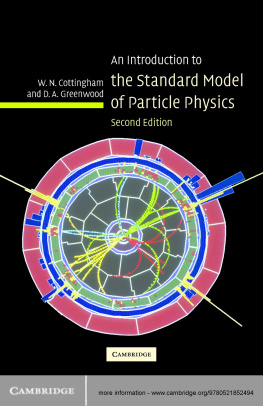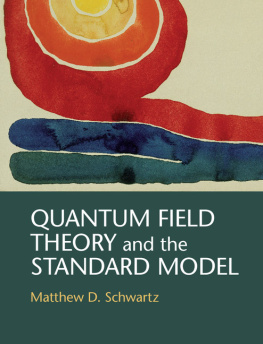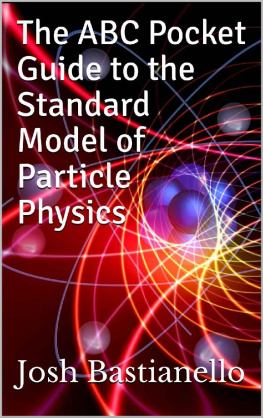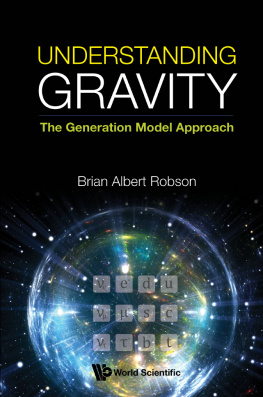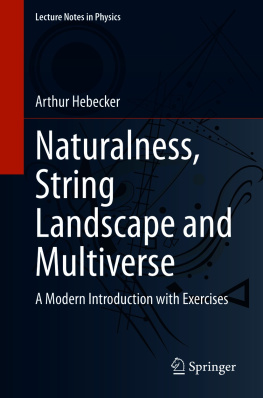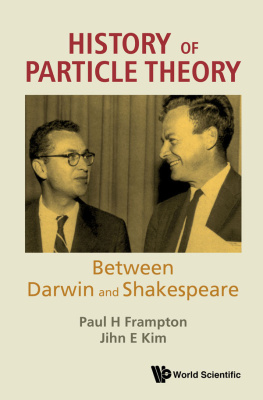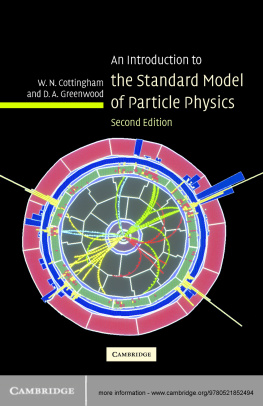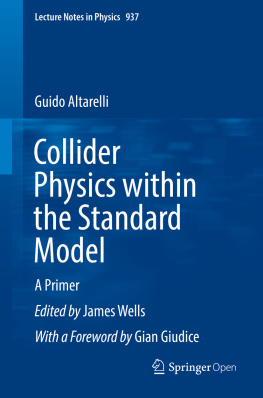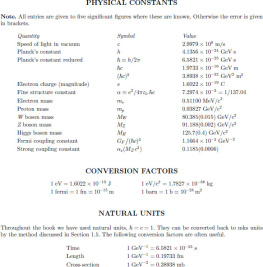In the eight years since the first edition, the Standard Model has not been seriously discredited as a description of particle physics in the energy region (<2 TeV) so far explored. The principal discovery in particle physics since the first edition is that neutrinos carry mass. In this new edition we have added chapters that extend the formalism of the Standard Model to include neutrino fields with mass, and we consider also the possibility that neutrinos are Majorana particles rather than Dirac particles.
The Large Hadron Collider (LHC) is now under construction at CERN. It is expected that, at the energies that will become available for experiments at the LHC (~20 TeV), the physics of the Higgs field will be elucidated, and we shall begin to see physics beyond the Standard Model. Data from the B factories will continue to accumulate and give greater understanding of CP violation. We are confident that interest in the Standard Model will be maintained for some time into the future.
Cambridge University Press have again been most helpful. We thank Miss V. K. Johnson for secretarial assistance. We are grateful to Professor Dr J. G. Krner for his corrections to the first edition, and to Professor C. Davies for her helpful correspondence.
Preface to the first edition
The Standard Model of particle physics is the result of an immense experimental and inspired theoretical effort, spanning more than fifty years. This book is intended as a concise but accessible introduction to the elegant theoretical edifice of the Standard Model. With the planned construction of the Large Hadron Collider at CERN now agreed, the Standard Model will continue to be a vital and active subject.
The beauty and basic simplicity of the theory can be appreciated at a certain classical level, treating the boson fields as true classical fields and the fermion fields as completely anticommuting. To make contact with experiment the theory must be quantised. Many of the calculations of the consequences of the theory are made in quantum perturbation theory. Those we present are for the most part to the lowest order of perturbation theory only, and do not have to be renormalised. Our account of renormalisation in on the anomalies that are generated upon quantisation.
A full appreciation of the success and significance of the Standard Model requires an intimate knowledge of particle physics that goes far beyond what is usually taught in undergraduate courses, and cannot be conveyed in a short introduction. However, we attempt to give an overview of the intellectual achievement represented by the Model, and something of the excitement of its successes. In ).
The mathematical background assumed is that usually acquired during an undergraduate physics course. In particular, a facility with the manipulations of matrix algebra is very necessary; symmetries. The mathematics we require is not technically difficult, but the reader must accept a gradually more abstract formulation of physical theory than that presented at undergraduate level. Detailed derivations that would impair the flow of the text are often set as problems (and outline solutions to these are provided).
The book is based on lectures given to beginning graduate students at the University of Bristol, and is intended for use at this level and, perhaps, in part at least, at senior undergraduate level. It is not intended only for the dedicated particle physicist: we hope it may be read by physicists working in other fields who are interested in the present understanding of the ultimate constituents of matter.
We should like to thank the anonymous referees of Cambridge University Press for their useful comments on our proposals. The Department of Physics at Bristol has been generous in its encouragement of our work. Many colleagues, at Bristol and elsewhere, have contributed to our understanding of the subject. We are grateful to Mrs Victoria Parry for her careful and accurate work on the typescript, without which this book would never have appeared.
Notation
Position vectors in three-dimensional space are denoted by r = ( x, y, z ), or x = ( x 1, x 2, x 3) where x 1 = x , x 2 = y , x 3 = z .
A general vector a has components ( a 1, a 2, a 3), and denotes a unit vector in the direction of a .
Volume elements in three-dimensional space are denoted by d3 x = d x d y d z = d x 1d x 2d x 3.

